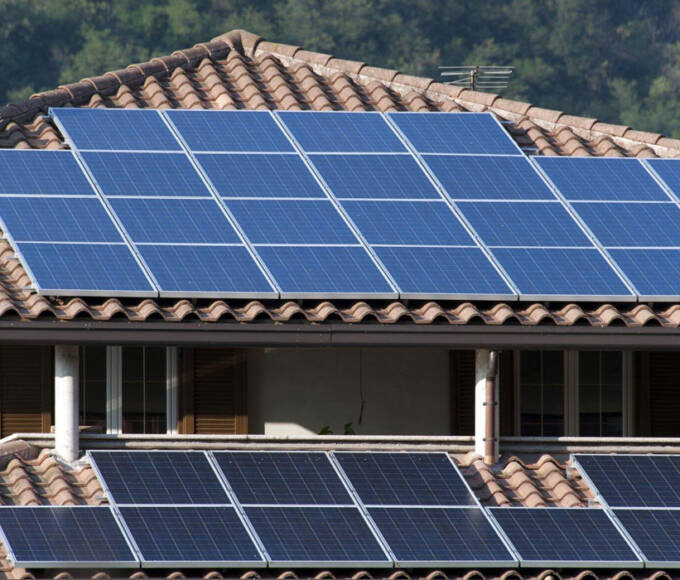As battery costs decline, battery energy storage systems rapidly become vital to renewable power generation. The technology combats various practical problems plaguing renewables and unlocks the full potential of natural energy supplies. BESSs enable businesses to reduce electricity costs through peak shifting, storing energy during low demand and cost, and discharging at periods of high grid energy rates. In addition, batteries can provide ancillary services to the grid and unlock additional revenue opportunities for organizations.
Operational Efficiency
Battery energy storage systems ensure that homes and businesses can still be powered by green energy even when the sun isn’t shining or the wind has stopped blowing. By capturing and purposefully deploying excess renewable power, battery storage can increase the value of this clean energy, reducing both costs and emissions. BESS systems can be front-of-meter (FTM) or behind-the-meter (BTM). FTM BESSs are installed at a home or business and connect directly to the utility grid. They are used for various commercial applications, including peak shaving (lowering the frequency of short-term energy consumption spikes), load shifting (from high on-peak electric prices to lower-cost off-peak prices), and participation in demand response programs.
By contrast, BTM systems are installed at residential or commercial premises and can be connected to a solar system or the electricity grid. They are used to reduce energy costs by lowering demand charges (fees charged based on the highest energy usage during a billing period), maximizing solar self-consumption, and providing backup power. Intelligent battery software coordinates energy production and usage history with utility rate structures, weather patterns, and other factors to determine the optimal times to charge and discharge the batteries. It can help reduce or eliminate demand charges and dramatically improve energy costs.
Cost Savings
As electricity demand rises, battery storage systems enable grid stability and improve power quality. They provide operational flexibility to the electric power system, increasing the utilization of renewable energy resources and reducing curtailment. They can also help alleviate transmission and distribution infrastructure congestion, prevent reliability violations on power lines, and increase overall grid resilience. The economics of battery energy storage depend on the project location, electricity prices, government incentives, and installation costs. They’re more cost-effective when deployed in regions with low electricity rates and lower upfront capital investment. In addition, they’re better suited for building owners who are subject to demand charges or who can benefit from time-of-use tariffs. For example, a building charged $40 per kW of peak demand can save money by storing energy during peak hours when the utility charges the highest kWh prices. This process is known as peak shaving. Battery energy storage solutions can also help reduce a building’s carbon footprint by eliminating its dependence on the grid. While the initial cost of installing a BESS may be significant, it will pay for itself over time through electricity savings and improved value to the property.
Time Savings
Most people think of residential battery storage as a safety net in case of power outages, but these systems can also deliver several benefits for businesses. Businesses can generate their energy during off-peak times and then use it at a time when electricity demand charges are highest (known as peak shaving) to reduce their energy bills. Alternatively, businesses can create additional revenues by accessing demand-side response markets and bidding into the electricity market to offer ancillary services such as frequency regulation, voltage support, black-start capability, and energy storage dispatch. BESSs are also able to store surplus renewable energy for dispatch when it is needed most, which helps to improve grid stability. Combined with renewables, battery energy storage can help mitigate the intermittent nature of wind and solar energy.
A lithium battery energy storage system has a range of applications, from small refrigerator-sized systems in electric vehicles to larger commercial and utility-scale systems that can provide an energy storage capacity of many megawatts. The technology can be tailored to fit the specific requirements of individual customers, whether it be a single-family home or an EV charging station, as well as for different energy use patterns and climate conditions. For example, a BESS in a home can provide backup power during a power outage, which gives homeowners peace of mind and potentially increases the value of their homes.
Reliability
Power reliability is one of the most significant benefits of battery energy storage systems. They help to reduce the demand for power grids during peak electricity usage times. It alleviates stress on the grid and prevents the need for expensive infrastructure upgrades, reducing the cost of power for utilities and their customers. Additionally, combining a BESS system with renewable energy equipment allows facilities to generate and use more sustainable power without increasing overall electricity costs. It is achieved using advanced control systems that analyze energy consumption and storage efficiency to determine the best time to charge and discharge batteries, shifting the highest load to non-peak hours and saving money.
In addition to reducing the need for costly infrastructure upgrades, grid-scale battery energy storage systems can earn revenue by participating in market-based ancillary services such as frequency response and reserve service. A third-party economic dispatch partner can work with energy storage system owners to ensure they are maximizing the value of their system by taking advantage of these opportunities. Lastly, battery energy storage systems can help to improve grid stability by absorbing hour-to-hour variability from wind and solar sources. The stored energy can then be released when necessary to address imbalances in the power supply and support a smooth transition from one generation source to another.








